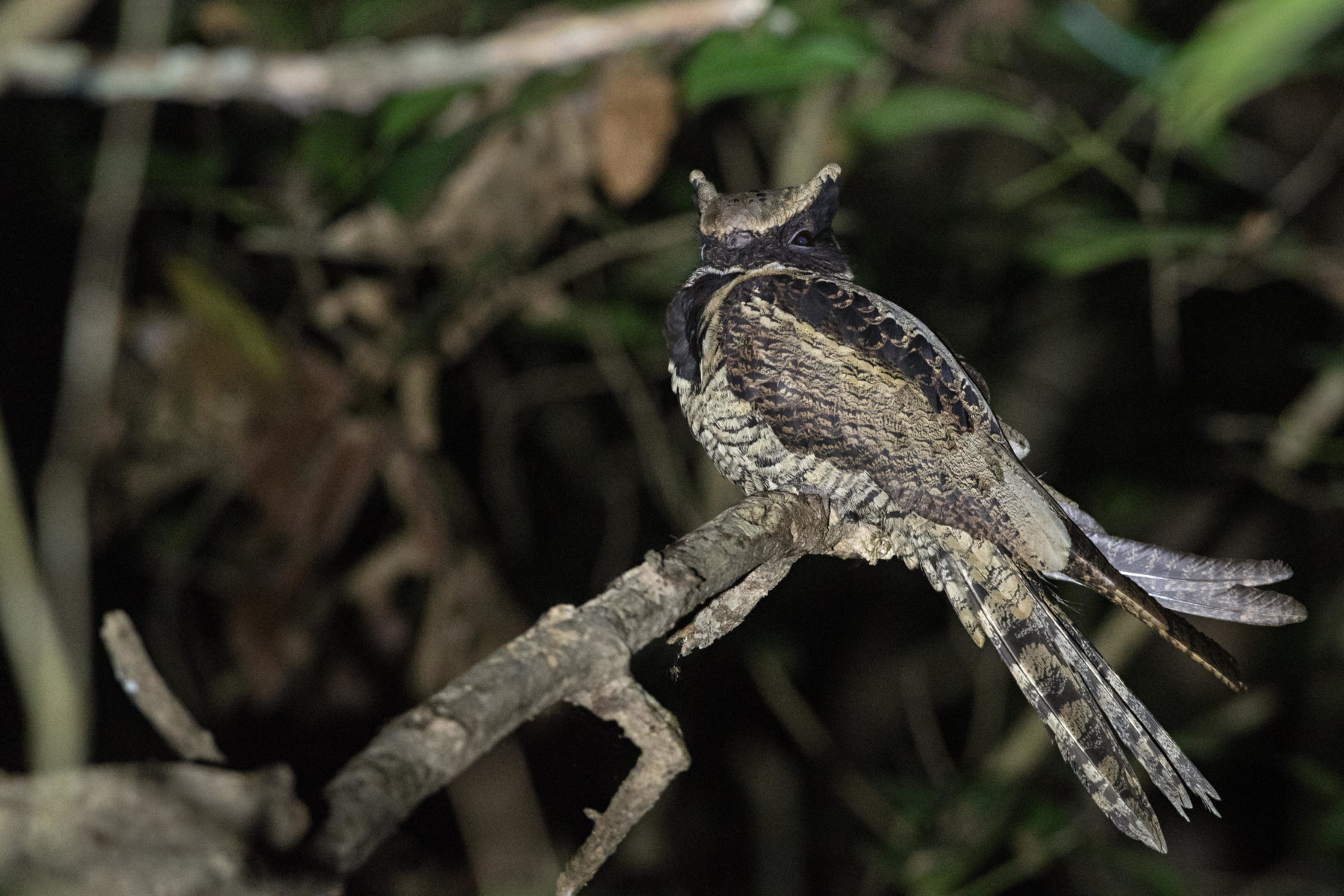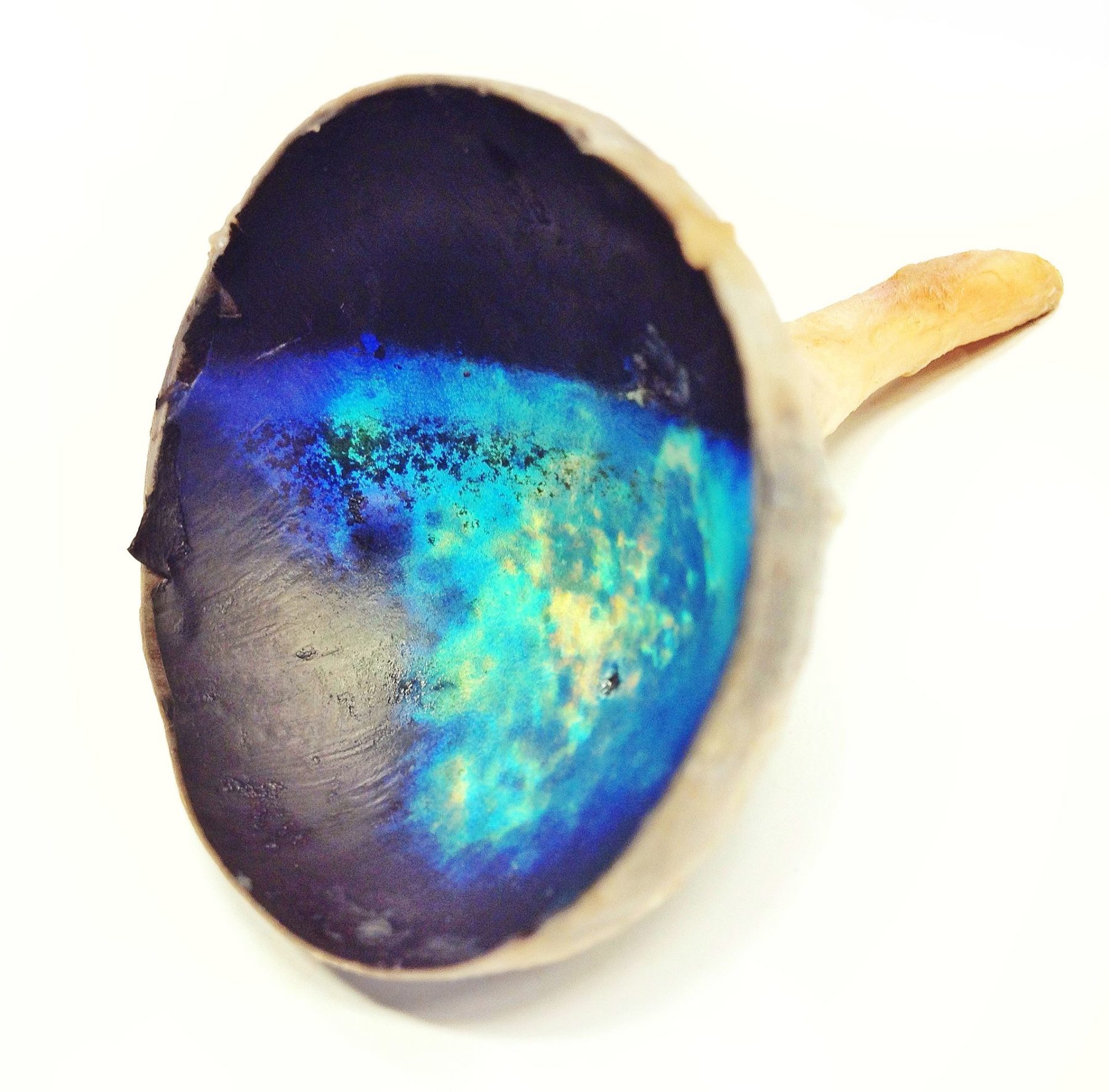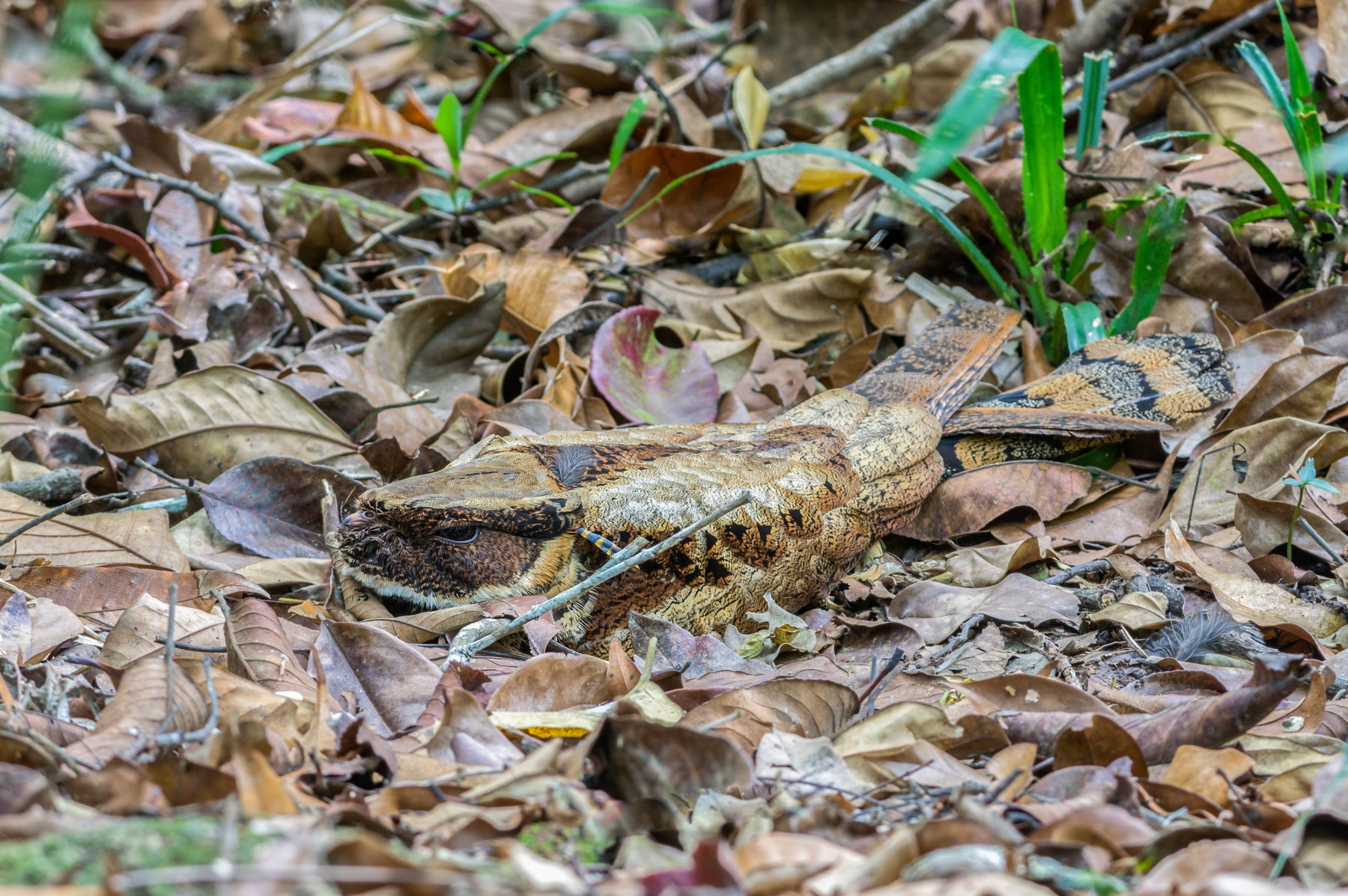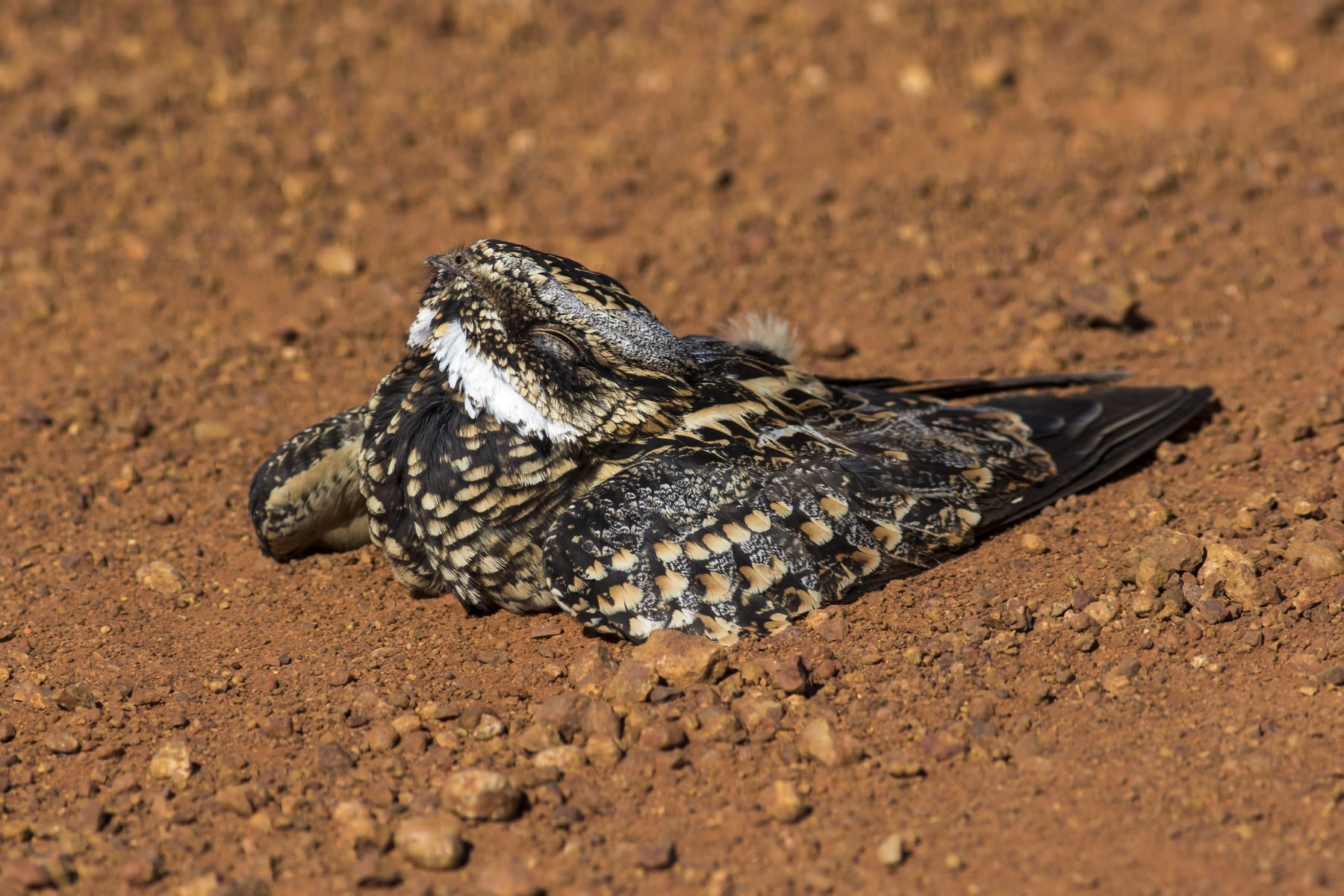The great eared nightjar looks like a baby dragon

Bec Crew
Bec Crew

A nocturnal species known for its haunting calls and unusual habit of incubating its eggs on the forest floor, this beautiful bird is a sight to behold for those lucky enough to spot one in the wild.
Great eared nightjars (Lyncornis macrotis) are found throughout Southeast Asia, keeping mainly to the moist, lowland forests of places such as Indonesia, Thailand, Vietnam, and parts of India. They belong to a small group of eared nightjars within the larger nightjar family Caprimulgida.
Among the seven known species of eared nightjars are the spotted nightjar (Eurostopodus argus) and white-throated nightjar (Eurostopodus mystacalis), both of which are native to Australia, and the satanic nightjar (Eurostopodus diabolicus) of Sulawesi, Indonesia, which has made quite a name for itself – some say its “plip plop” call sounds like it’s plucking out a person’s eyes.
The great eared nightjar is among the larger nightjar species, and has one of the most impressive sets of ear-tufts. In fact, at certain angles, those ears make it look a bit like batman?

Like a true creature of the night, the great eared nightjar has a layer of tissue at the back of its eye called a tapetum lucidum, which reflects visible light back through its retina to give it superior night vision.
Also found in the eyes of cats, crocodiles, fruit bats and an array of other animals, the tapetum lucidum is a marvel of evolution – just look at this one, extracted from a cow’s eye:

The motley patterns of grey, black, brown and chestnut that run through the great eared nightjar’s plumage help to keep it camouflaged on the forest floor, where it will incubate a single egg at a time.
It’s a rather strange tactic for a bird, which could just as easily (and arguably more safely) incubate its young in a lofty nest elevated in the trees.
Here’s a great eared nightjar demonstrating that amazing camouflage, which is so good, I’d be worried about stepping on one:

What makes the great eared nightjar’s insistence on nesting on the ground even stranger is that it’s a fantastic flier, and spends a good amount of time in the air. In fact, it eats flying – it catches and eats insects on the wing – and even drinks flying, gliding past lakes and rivers and scooping up water from the surface.
Whatever the reason for the great eared nightjar’s penchant for hanging out on the ground, it’s worth keeping your eyes peeled if you’re in nightjar territory. This spotted nightjar, for example, photographed on Gunbarrel Highway in Western Australia, really doesn’t want you to kill its vibe:





